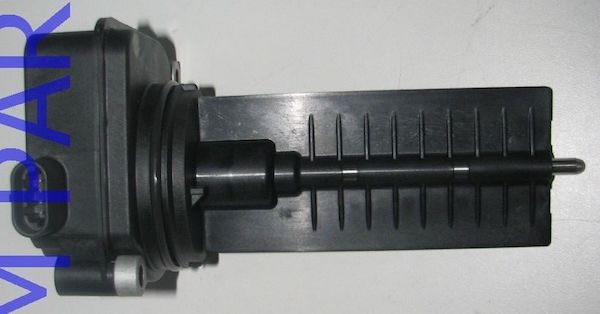
P0661 Low signal in the intake manifold tuning valve control circuit, bank 1
Content
- OBD-II Trouble Code - P0661 - Data Sheet
- What does trouble code p0661 mean?
- What is the severity of this DTC?
- What are some symptoms of code P0661?
- What are some of the common causes for the code?
- What are some of the steps to troubleshoot a P0661?
- Common Mistakes When Diagnosing Code P0661
- How serious is the P0661 code?
- What repairs can fix code P0661?
- Additional comments to consider regarding code P0661
- Need more help with the P0661 code?
OBD-II Trouble Code - P0661 - Data Sheet
P0661 - Intake manifold control valve control circuit, bank 1, low signal level.
Code P0661 means that the PCM or another control module on the vehicle has detected voltage from the intake manifold adjustment valve control circuit that is below the automaker's settings.
What does trouble code p0661 mean?
This is a generic powertrain diagnostic trouble code (DTC) and is commonly applied to OBD-II vehicles. Car brands may include but are not limited to Saturn, Land Rover, Porsche, Vauxhall, Dodge, Chrysler, Mazda, Mitsubishi, Chevy, Honda, Acura, Isuzu, Ford, etc.
The ECM (Engine Control Module) is responsible for monitoring and adjusting the numerous sensors and systems involved in your vehicle's operation. Not to mention the detection of malfunctions in the specified systems and circuits. One of the systems your ECM is responsible for monitoring and correlating is the intake manifold control valve.
I've heard they're called by many different names, but "snapback" valves are common in the repair world. The intake manifold tuning valve has several possible purposes to help your engine run and drive your vehicle. One of them is to regulate the pressure between the intake manifolds. Another could be redirecting the intake air to a separate set of intake rails (or a combination) to change the flow and possibly the performance of your engine. The valve itself is, in my experience, mostly made of plastic, so you can imagine possible malfunctions combined with notoriously high temperatures in the engine bay.
P0661 is a DTC identified as "Intake Manifold Adjustment Valve Control Circuit Low Bank 1" and it indicates that the ECM has detected too low electrical valve readings on bank 1. On engines with multiple banks (e.g. V6 , V8) bank #1 is the side of the engine that contains cylinder #1.
This code can be caused by a mechanical or electrical malfunction of the intake manifold control valve. If you are in an area subject to extreme cold weather, it may cause the valve to malfunction and not rotate properly as required by the ECM.
Intake Manifold Adjustment Valve GM: 
What is the severity of this DTC?
Depending on the actual problem associated with your case, this can range from something not to worry about to something quite serious and potentially damaging to your engine's internal components. It would be a good idea to be careful when handling mechanical parts such as the intake manifold control valve. There is a chance that unwanted parts will end up in the engine's combustion chamber, so keep this in mind if you thought to postpone this for another day.
What are some symptoms of code P0661?
Symptoms of a P0661 diagnostic code may include:
- Poor engine performance
- Loud clicking sound from the engine compartment
- Reduced fuel economy
- Possible misfiring at startup
- Reduced engine power
- Power range changed
- Cold start problems
What are some of the common causes for the code?
Reasons for this P0661 engine code may include:
- Bad driver in PCM (probably)
- An open or short circuit in the intake manifold adjustment valve control circuit.
- Bad connection in the circuit
- Faulty fuel injector control module
- Intake manifold adjustment valve (slider) faulty
- Broken valve parts
- Stuck valve
- Extreme cold
- Wiring problem (such as scuffing, cracking, corrosion, etc.)
- Broken electrical connector
- ECM problem
- Dirty valve
What are some of the steps to troubleshoot a P0661?
The first step in the process of troubleshooting any problem is to review technical service bulletins (TSBs) for known problems with a particular vehicle.
Advanced diagnostic steps become very vehicle specific and may require appropriate advanced equipment and knowledge to be performed accurately. We outline the basic steps below, but refer to your vehicle / make / model / transmission repair manual for specific steps for your vehicle.
Basic step # 1
Each time the ECM activates a DTC (Diagnostic Trouble Code), the repair technician is advised to clear all codes to see if it appears immediately. If not, carry out long and numerous test drives on the vehicle to ensure that he / they are active again after several operating cycles. If it reactivates, continue diagnosing the active code (s).
Basic step # 2
First, you will need to find an intake manifold control valve. This can be tricky because most often they are installed internally in the intake manifold. That said, the valve connector should be reasonably accessible, so inspect it for broken tabs, molten plastic, etc. to make sure it makes a proper electrical connection.
Basic step # 3
Depending on the capabilities of your OBD2 code scanner / scanner, you can control the valve electronically with it. If you find this option, it can be a good way to determine if the valve is working across its full range. Also, if you hear clicks coming from the intake manifold, this can be a good way to determine if the intake manifold control valve is responsible. If you hear an abnormal click from the air intake while adjusting the sensor with the scanner, there is a good chance that there is an obstruction or the valve itself is stuck for one reason or another.
At this point, it would be a good idea to remove the valve and physically inspect it and inside the intake manifold for any obstructions. If there are no obstructions and clicks are present, you can try replacing the valve, most likely this is a problem. Keep in mind that this is not an easy task in some cases, so do research ahead of time so you don't get stranded without the right parts, tools, etc.
NOTE: Always refer to the manufacturer's specifications before performing any repairs or diagnostics on your vehicle.
Basic step # 4
Make sure you remember to inspect the harness associated with the control valve. These wire harnesses can be routed through engine parts and other high temperature areas. Not to mention the potential abrasion / cracking associated with engine vibrations.
Basic step # 5
If you've tried everything else, take a look at your ECM (engine control module), especially if several unrelated codes are currently active or come on and off intermittently.
This article is for informational purposes only and technical data and service bulletins for your specific vehicle should always take priority.
Common Mistakes When Diagnosing Code P0661
One of the common mistakes here is trying to correct the condition by referring to the appropriate symptom codes. For example, a misfire code may be present, but this is not an actual problem and trying to fix it will not alleviate the condition that caused the code to set in the first place. To make an accurate diagnosis, the mechanic must start with the earliest code and move to the latest.
How serious is the P0661 code?
Your vehicle may still be driven even with a stored code P0661. However, since this code could mean you end up with driving problems, it's important to fix it as soon as possible.
What repairs can fix code P0661?
The most common repair code for P0661 includes the following:
- Reinstalling the driver in PCM
- Replacement a failed intake manifold adjustment valve
- Repairing loose or corroded connections in wiring intake manifold adjustment valve
Additional comments to consider regarding code P0661
Diagnosing a P0661 code can be time consuming as there are many potential problems and a circuit/wiring check on its own can be exhaustive. However, it is vital to diagnose the underlying problem rather than "throw details" into the problem.
Need more help with the P0661 code?
If you still need help with DTC P0661, post a question in the comments below this article.
NOTE. This information is provided for informational purposes only. It is not intended to be used as a repair recommendation and we are not responsible for any action you take on any vehicle. All information on this site is protected by copyright.
